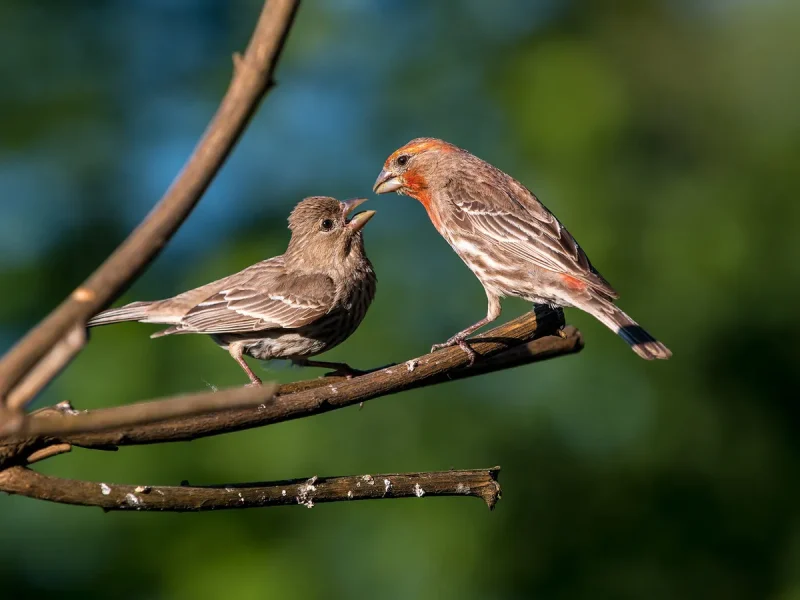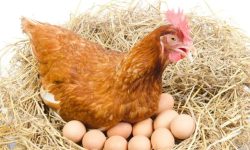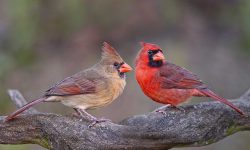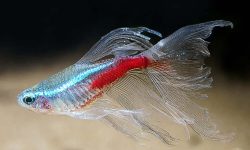The House Finch (Haemorhous mexicanus) may be small in size, but it carries a large ecological presence across North America. Males are instantly recognizable by their rosy red plumage, but it’s their nesting behavior—resourceful, flexible, and deeply intertwined with human-altered landscapes—that truly sets this species apart.
Behind each bright flash of red lies a hidden world: a nesting strategy shaped by instinct, innovation, and survival under pressure. Whether tucked into porch lamps or nestled among city vines, every House Finch nest is a living blueprint of adaptation. Built from feathers, twigs, string, and sometimes even bits of plastic, these structures are more than shelter—they are ecological statements, revealing the complex relationship between wildlife and the urban world.

An Introduction to the House Finch’s Nesting Behavior
The House Finch (Haemorhous mexicanus) is a master of adaptation when it comes to nesting. Unlike woodpeckers, which excavate their own cavities, House Finches rely on pre-existing structures—both natural and artificial. This includes tree forks, cactus branches, building ledges, ivy-covered walls, porch lamps, hanging flower baskets, and other nooks created by human architecture. Their willingness to nest close to human activity reflects a high degree of behavioral plasticity and urban tolerance.
Nesting usually begins in early spring, triggered by increasing daylight and temperature. The female takes the lead in construction, gathering a wide range of materials: dry grasses, twigs, feathers, string, hair, and even bits of plastic or cigarette filters. This eclectic mix is woven into a tight, cup-shaped nest that fits snugly into whatever space is available. While the materials may seem flimsy or improvised, the structure provides insulation, wind buffering, and a secure environment for egg incubation and chick development.
This flexible nesting strategy—combined with a long breeding season and multiple broods—has allowed the House Finch to thrive in both wild and urbanized habitats across much of North America.
The Nesting Process: From Site Selection to First Flight
Choosing the Perfect Nesting Site
For House Finches, selecting a nesting site is a delicate trade-off between safety, accessibility, and environmental pressures. Unlike many bird species that avoid human activity, House Finches often embrace urban spaces, nesting on windowsills, light fixtures, or near doorways. This unusual tolerance of noise and movement may serve as an adaptive strategy: by nesting near humans, they reduce their exposure to natural predators such as snakes, jays, or raptors, which typically avoid human-dominated areas.
Yet this strategy comes with its own risks. Urban nesting exposes finches to artificial threats—including domestic cats, frequent human disturbance, and structural instability of manmade surfaces. In some regions, nests may also fall victim to parasitism by House Sparrows, which compete aggressively for nesting sites.
Ultimately, House Finches must weigh these variables carefully. Their ability to succeed in such varied and unpredictable environments reflects not just behavioral flexibility, but a finely tuned instinct for maximizing reproductive success under modern ecological constraints.
Building the Nest: Lightweight but Resilient
Nest construction typically spans 2 to 6 days and is carried out almost entirely by the female. She begins by weaving a coarse outer base of twigs, dry grasses, or straw, then adds an interior lining of softer, insulating materials such as feathers, animal hair, and bits of cloth. Despite often being no larger than a human hand, the finished nest is structurally complex—its compact, bowl-like shape helps retain heat, shed moisture, and cradle developing eggs securely.
One of the most remarkable aspects of House Finch nest-building is their resource flexibility. In urban settings, females readily incorporate whatever is available—synthetic fibers, string, plastic shreds, or even cigarette filters. While these materials can provide excellent insulation, they also introduce modern hazards, such as entanglement or ingestion by nestlings. Nevertheless, this ability to exploit a wide variety of materials speaks to the House Finch’s exceptional nesting plasticity, a key factor in their success across highly altered landscapes.
Egg Laying and Incubation
After the nest is completed, the female lays between 2 to 6 eggs, usually one each morning. These eggs are pale blue or greenish and unmarked, blending subtly into the soft interior lining. The laying phase is followed by an incubation period lasting approximately 12 to 14 days, during which the female remains almost constantly on the nest. Her brooding behavior is essential—not only for maintaining a stable temperature, but also for protecting the delicate embryos from temperature fluctuations and microbial threats.
During this period, the male plays a vital supporting role. He brings food to the incubating female and keeps watch nearby, issuing soft contact calls or alarm notes if a potential threat approaches. This division of labor allows the female to conserve energy while ensuring the eggs remain within the narrow thermal window required for development.
Although House Finches are tolerant of human proximity, they remain sensitive to direct disturbance. If approached repeatedly during early incubation, they may abandon the nest altogether. However, once the eggs near hatching, parental investment increases sharply, and both birds become more committed to defending and maintaining the site.
Hatching and Chick Development
House Finch chicks hatch after roughly two weeks of incubation, emerging blind, naked, and completely helpless. In this altricial state, their survival depends entirely on parental care. Both the male and female share feeding duties, delivering a diet primarily composed of regurgitated seeds, occasionally supplemented with insects to provide extra protein during early growth.
Development proceeds rapidly. Within a few days, the chicks begin to sprout down feathers, allowing for better temperature regulation. Feather tracts emerge soon after, and eyes open around the fifth or sixth day, marking a shift in responsiveness and mobility. Parental feeding remains intensive throughout this period, with both adults making frequent trips to meet the nutritional demands of their growing brood.
By day 12 to 14, the nest becomes a tight cluster of active, feathered juveniles. Fledging typically occurs between 12 to 19 days post-hatching. Initial flights are short and awkward, often ending in nearby shrubs or on the ground. However, fledglings learn quickly, improving their flight and foraging skills over the next several days. During this time, they remain close to the nesting area, still relying on their parents—especially the male—for food and guidance as they transition toward independence.
Challenges and Hazards in Urban Nesting
Nest Predators and Environmental Threats
Despite their tendency to nest near human structures, House Finches are not immune to predation. Common nest predators include snakes, raccoons, blue jays, squirrels, and especially domestic cats, which pose a significant threat in urban and suburban areas. These predators may raid nests for eggs or nestlings, often wiping out entire broods in a single visit. Proximity to people can deter some natural predators, but not those already adapted to human-altered environments.
Environmental conditions also play a key role in nest survival. Urban heat islands—areas where man-made surfaces absorb and radiate heat—can lead to thermal stress, particularly during summer nesting attempts. Overheating may reduce hatching success or cause dehydration in young chicks, especially in poorly ventilated nest locations like metal fixtures or tight corners.
Another major concern is the accumulation of parasites and pathogens in reused nests. Although House Finches usually build a fresh nest for each brood, they sometimes stack new material atop an old structure. This habit can invite infestations of parasitic mites, lice, or disease-causing bacteria. Without proper ventilation or environmental cleaning, these microhabitats can quickly become hazardous. Such infections may stunt chick growth, reduce survival rates, or cause entire broods to fail—underscoring the delicate balance between nesting success and environmental risk.
Brood Parasitism and Nest Competition
Although House Finches are not frequent hosts of brood parasites, they do occasionally fall victim to Brown-headed Cowbirds—a species known for laying eggs in the nests of other birds. In such cases, the cowbird chick hatches earlier and grows faster than the finch’s own young, often monopolizing food delivered by the parents. This can lead to starvation or stunted development of the House Finch chicks, despite the adults being unaware they are raising an intruder.
In addition to parasitism, nest site competition poses a significant threat. Urban and suburban environments offer limited nesting cavities and ledges, leading to frequent conflict with more aggressive species like House Sparrows and European Starlings. These birds may forcefully evict House Finches from an active nest—sometimes destroying eggs or killing chicks in the process. Sparrows, in particular, are notorious for entering a nest cavity, pecking eggs, and even attacking incubating females.
These pressures highlight the ongoing challenge of reproduction in human-altered landscapes, where space is scarce and ecological interactions become increasingly competitive. Yet, despite these obstacles, the House Finch’s adaptability continues to support its widespread success.
The Hidden Impact of Human Proximity
While nesting near humans offers some protection from natural predators, it introduces a new set of physiological and behavioral challenges. Human activity—whether through loud noise, vibration, or physical disturbance—can lead to nest abandonment, particularly during the early stages of nest construction or incubation. Even seemingly benign actions, like watering a hanging plant or adjusting a porch light, can disrupt the birds’ nesting cycle.
Beyond physical interference, chronic exposure to artificial lighting and human motion may trigger subtle but significant effects. Prolonged light exposure can disrupt circadian rhythms, while repeated disturbances may elevate corticosterone levels, a stress hormone known to impair parental care. Elevated stress in nesting females has been correlated with reduced feeding frequency, slower chick growth, and lower fledgling survival in some songbirds.
Yet despite these pressures, House Finches display remarkable resilience. Many return to the same nesting spots year after year—balconies, eaves, climbing vines—demonstrating a strong fidelity not just to place, but to survival itself in the heart of human spaces.
Ecological Importance of House Finch Nesting
The nesting behavior of House Finches goes far beyond reproduction—it functions as a subtle but informative gauge of urban ecological health. Because these birds readily incorporate materials from their immediate surroundings, their nests often reflect the environmental quality of a neighborhood. A higher proportion of plastic fibers or synthetic threads, for example, may indicate elevated levels of human-generated waste, while the presence of natural fibers suggests more balanced conditions.
Moreover, nest success rates offer clues about the stability of urban habitats. Factors such as climate variability, predator density, food availability, and human disturbance all shape the outcomes of each nesting attempt. As such, House Finches serve as bioindicators, providing researchers and conservationists with real-time insights into the pressures shaping city wildlife.
Their role doesn’t end when the breeding season is over. Abandoned nests are often reused by other small species, including wrens, chickadees, or even rodents. Additionally, the finches’ habit of dropping or scattering seeds contributes to plant dispersal, subtly aiding green space regeneration in fragmented environments.
In essence, each humble nest is a nexus of interaction—a point where urban wildlife, vegetation, and human impact converge. Through their nesting choices and outcomes, House Finches quietly participate in shaping and reflecting the ecological dynamics of the modern city.
Conclusion: Small Nests with Grand Narratives
The nesting behavior of the House Finch is not just a matter of instinct—it is a living narrative of resilience, resourcefulness, and coexistence in a world reshaped by humans. From window ledges to trailing vines, their nests are acts of quiet adaptation, blending wild instinct with urban opportunity.
Each nest holds more than eggs and feathers. It shelters a microcosm of ecological interaction: the influence of climate, the proximity of predators, the abundance (or absence) of food, and the subtle signals of environmental change. The materials chosen, the location selected, and the fate of the brood all speak volumes about the health and balance of our shared spaces.
In every fledgling that takes wing, we witness the closing of one chapter and the hopeful beginning of another. These small, woven bowls of twigs and thread may seem modest—but they are vessels of survival, symbols of persistence, and reminders that even the smallest species leave a lasting imprint on the landscapes we call home.






